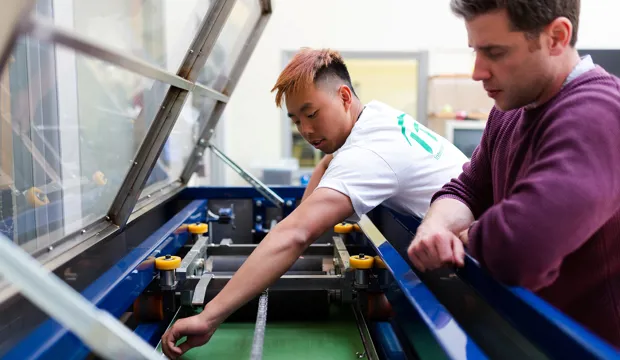
Materials and their properties
Find resources for the T level in engineering, to plan your engaging sessions for students.
Download our free curriculum grid to find resources that are mapped against module 6 Materials and their properties.
In the free download, you will find information on where to find content to support the teaching of:
6.1 Physical and mechanical properties of materials.
- Physical properties – Density, melting point, thermal and electrical conductivity (resistivity), thermal expansivity, corrosion resistance, specific heat capacity, hardenability, permeability, ability to be recycled
- Physical properties – weldability
- Physical properties – permittivity
- Mechanical properties – Strength (tensile, compressive, shear, torsion)
- Mechanical properties – hardness, toughness, brittleness, ductility, plasticity, malleability, elasticity
6.2 Types of material and their structures.
- Types – Ferrous metals (cast iron, low carbon steel, medium carbon steel, high carbon steel, stainless steel)
- Types – Non-ferrous metals (aluminium and alloys, copper, brass and bronze, nickel, zinc).
- Types – Thermoplastic polymers (ABS, HIPS sheet and polystyrene foam, PLA, polycarbonate, polypropylene, PMMA/acrylic).
- Types – Thermosetting polymers (urea formaldehyde, melamine formaldehyde, phenol formaldehyde, epoxy resin, polyester resin)
- Types – Elastomers (rubber, neoprene)
- Types – Composites (GRP, CRP)
- Types – Engineering ceramics (silicon carbide, glass)
- Types – Wood (soft wood, hard wood, MDF)
- Types – Smart materials: shape memory alloys, quantum tunnelling composite, thermochromic materials, photochromic materials, piezoelectric crystals
- Structures – Bonding mechanisms (metallic, covalent, ionic, van der Waal’s forces)
- Structures – microstructure (grains), crystalline and non-crystalline (amorphous) materials
- Structures – lattice structure in metals (dislocation movement and pinning)
- Structures – crosslinking of polymers
6.3 The effects of processing techniques on materials.
- Techniques - Metals – forming (rolling, forging, moulding/press forming), welding, brazing, casting, sintering, coating, hot working, cold working
- Techniques – Thermoplastic polymers – temperature, mould/injection pressure
- Techniques – Thermosetting polymers – curing
- Techniques – Ceramics – sintering pressing force and firing temperature
- Techniques – Composites – influence of alignment of reinforcement on anisotropy of properties, influence of matrix/reinforcement ratio on tensile strength
6.4 Heat treatments and surface treatments.
- Heat treatments – Case hardening, quench hardening, tempering, normalising, annealing and precipitation hardening
- Surface treatments – Painting, plastic coating, galvanising and electrolytic (galvanic) protection
6.5 Causes of material failure and their prevention.
- Causes – Corrosion (oxidation of metals including rusting of ferrous metals, chemical composition and attack, stress corrosion), aging
- Causes – physical (deformation, fracture, fatigue, creep, erosion)
- Prevention – Coatings, sacrificial anodes and cathodes, galvanising
6.6 Materials testing methods and interpretation of results.
- Methods – Visual inspection
- Methods – tensile testing
- Methods – toughness testing
- Methods – corrosion resistance
- Methods – wear resistance
- Methods –fatigue (Wohler)
- Methods – electrical conductivity
- Interpretation of results – Hooke’s law
- Interpretation of results – load-extension graphs (tensile strength, elastic limit, ultimate tensile strength, maximum plastic deformation, calculation of stress, strain and Young’s modulus), characteristic graphs of different materials, necking and transition zone in steel
Download our free curriculum grid to find resources that are mapped against the above modules.
Please do share your T Level learning highlights with us @IETeducation.



